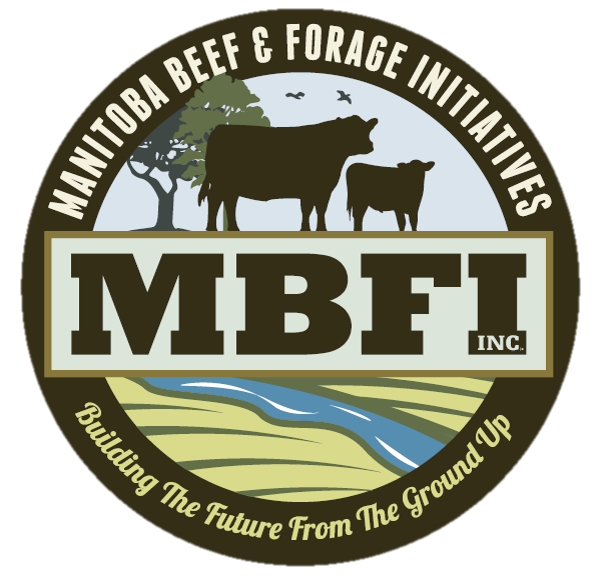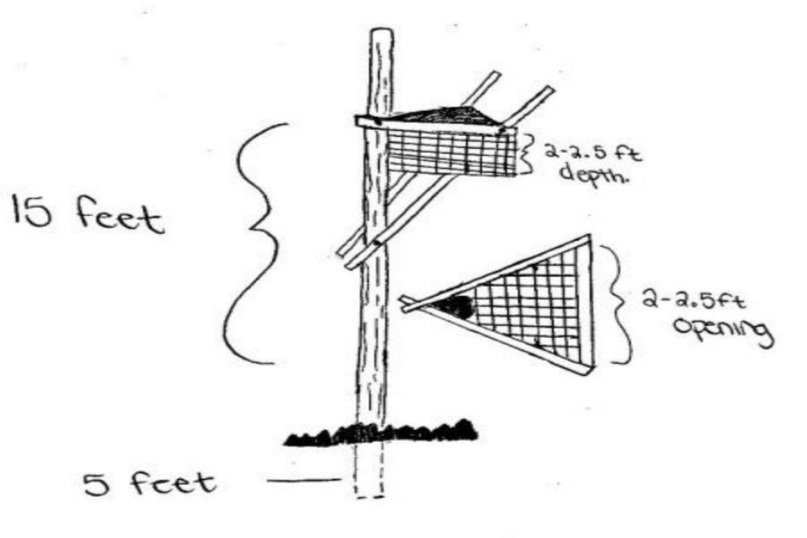Back to Research & Demonstration
Project Details
Project Lead: Breanna Sheppard, Land & Water Management (2020), Assinibione Community College
Collaborators: Timothy Poole, Manitoba Agriculture and Resource Development
Years: 2020
Project Status: Complete
Funding & In-Kind Support: Manitoba Hydro
Location: Johnson Farm
Scope: ACC Capstone Project
Keywords: Habitat biodiversity
New basket-like nests to suit Manitoba conditions and boost Ferruginous Hawk populations
Background
The grassland prairie ecosystem contains the largest amount of at risk species in the province including the Ferrgunious Hawk (Buteo regalis). Large-scale tillage farming and industrial development has had a severe impact on Ferruginous Hawk habitat range and access to prey populations, including the Richardson’s Ground Squirrels (gophers) throughout Manitoba and most of Canada. The Ferruginous Hawk has been listed as endangered for over 40 years. They are listed by the Committee on Endangered Wildlife in Canada (COSEWIC) as threatened, and their status in the Species at Risk Act (SARA) is listed under Schedule 1, Threatened. Their breeding range in Canada has decreased by 50% and only 10% of their total population remains in Canada, most of which is in Alberta. In Manitoba, breeding populations have suffered an 82% decline in the last 24 years.
The Project
Alberta’s Species at Risk Program. (2011, March). Ferruginous Hawk Artificial Nest Poles: Inventory and Construction Protocol.
Breanna Sheppard, Land and Water Management student (2020) at Assiniboine Community College, partnered with Manitoba Beef & Forage Initiatives (MBFI) for her capstone project to apply her passion for conservation of endangered species to design a project around a need for Ferruginous hawk nesting habitat in southwestern Manitoba. An updated Field Guide has been prepared in collaboration with Timothy Poole, Manitoba Agriculture and Resource Development (MB ARD) with model nesting structures installed at MBFI.
The two hanging-basket nesting structures for Ferruginous Hawks being built at MBFI’s Johnson Farm in the fall of 2020 will adapt a design that has proved successful in Alberta. The nesting structures will have modifications to the flat platform as suggested by retired wildlife species-at-risk biologist (pers. observation by Ken De Smet) and current wildlife species-at-risk biologist Timothy Poole (MB ARD). The nesting structures will be included as a part of an ongoing gopher control demonstration and trapping program at MBFI, and will serve as a model to others interested in becoming Ferruginous Hawk landlords.
The overall goal of the project will be to have Ferruginous Hawks breed in multiple areas in the province with the help of landowners incorporating these nesting platforms on their land. The Field Guide will provide private landowners, conservation districts, and others, with the proper information and contacts to assist in providing this endangered species with suitable habitat.
Benefits
Being a Ferruginous Hawk landlord will provide many different benefits for landowners, land, and livestock, and will save time and money in gopher control. It also contributes to biodiversity, or species diversity, which provides many ecosystem benefits to other wildlife and humans. Field Guide promotion will target areas that have livestock as the hawks will use their remnants as supplies for their nests. A Ferruginous Hawk pair can consume up to 500 Richardson’s Ground Squirrels (gophers) in a single breeding season, so areas that are home to an abundant amount of gophers are ideal. They will act as a bio-control to reduce populations of unwanted rodents, and subsequently decrease field hazards such as burrow mounds and holes. The project plan to build the nesting structures at MBFI, and promotion of the developed Field Guide, will be completed by June 2020 with ongoing site observation of nesting structures.
Breanna Sheppard and her dad after building the first structure. (2020)
Structures were built at MBFI on Sept. 28, 2020.






